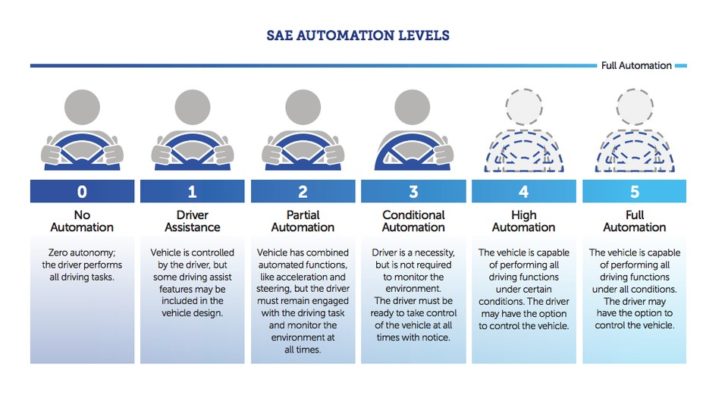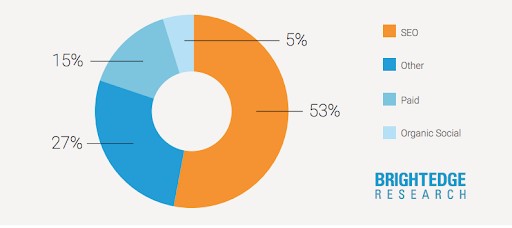Scaling SEO: 5 levels of automated digital progression & elevation
BrightEdge's Jim Yu discusses the five levels of scaling SEO, from manual SEO all the way to real-time decision-making and automated optimizations.
BrightEdge's Jim Yu discusses the five levels of scaling SEO, from manual SEO all the way to real-time decision-making and automated optimizations.
Today, SEOs have a massive opportunity to expand their role in digital workflows, as far as both the volume and importance of tasks available. As companies increasingly look for equal parts creativity and analytical skills in digital leadership, experienced SEOs are uniquely positioned to fill the gap—that is, if they are able to capitalize on the innovations that enable them to practice scaling their best SEO efforts.
I wrote recently about the power of intelligent automation; that is, automation supercharged by a layer of artificial intelligence. Digital is encountering and even coming to rely on AI in predictive analytics, automated sales analysis, research and information aggregation, automated communications (think chatbots and email), and even virtual personal assistants.
Across digital channels, campaigns, and tactics, it seems nothing is untouched by automation. And yet the degree of automation and just how much AI informs the decisions being made can vary widely. Intelligent automation isn’t an all-or-nothing prospect—there are many different ways we can work alongside the machines revolutionizing digital.
In fact, those with the greatest understanding of how to collaborate with intelligent machines hold the keys to driving digital forward.
Let’s look to the automotive industry for a model automation framework that illustrates just how much technology impacts the human experience in a defined task. The Society of Automotive Engineers created its “Levels of Driving Automation” standard to define the six levels of automation in the driverless car industry.
From Level 0 through to 5, the tasks a human driver must undertake decrease, while technological features increase.

Image source: NHSTA.gov
In Level 0, the driver is on her own and must constantly steer, brake, accelerate, signal, and otherwise control all aspects of the car’s performance. By Level 3, she may be in the driver’s seat but various automated driving features are engaged. The conditions must be right for automated operation, and the machine can ask her to take over at any time.
Lane-keeping assist, adaptive cruise control, and self-parking are a few examples of automated driving features you might experience in a Level 3 or 4 vehicle. (As Lance Eliot pointed out recently in Forbes, we’ve yet to see a true Level 5—a truly automated and driverless car—in action. The U.S Department of Transportation expects we’ll see fully driverless cars from 2025 and beyond).
We can apply this sort of framework to help further our understanding of the intelligent automation opportunity for SEOs. And while the automotive industry has all sorts of regulations and laws in place to protect public safety, you are a lot freer to explore the boundaries of intelligent automation in digital (and in SEO, in particular), so long as you respect user privacy.
The SEO of days gone by was almost entirely manual and incredibly time-consuming. That’s not to say that the more labour-intensive style of SEO doesn’t still happen today; there are still some SEOs who toil away in Excel, manually auditing and optimizing sites. Manual SEO gives you complete control over your entire search strategy, from selecting backlinks at the individual level to careful optimizations throughout the site. But with 53% of website traffic coming from organic search – opportunities to capitalize and scale are immense.

However, it’s simply impossible to ingest, analyze and activate search data at any sort of scale without automation. Manual SEO can be incredibly effective, but that value is reduced by every missed opportunity caused by slow implementation and the expensive overhead of a team of experts.
Some of the tools you use in SEO today were probably borne out of earlier SEOs’ need to automate manual tasks such as keyword research and tracking rankings. Second generation SEO tools began to automate content optimizations (at least, pointing out opportunities to optimize).
Simple automation is almost exclusively about reducing manual labor for simple tasks. Gathering the same data set at regular intervals, such as daily rankings on specific keywords, for example. Scouring the web for links to your site.
Simple automation will reduce labor spent on these tasks, freeing up time and energy for more creative and strategic activities. Think of this level of SEO automation as cruise control—you can take your foot off the pedal and let the machine do some of the work, but you are very much still in control of the car.
In Level 3, our SEO software becomes a whole lot smarter thanks to artificially intelligent analysis. In this stage, the car is driving itself—but only under certain conditions.
From your place in the driver’s seat, you control what input you feed your SEO tools and define what you’d like as outcomes. Through the analysis of massive data sets (far more than you could ever plow through on your own), you’re able to glean greater insights and make better decisions.
You can automate the process of analyzing your site’s content and have your software return optimization recommendations based on your selected keywords, for example. This can inform your content creation efforts and ensures that you’re spending the time you do have on the areas with the potential for the highest impact.
The car is driving itself, but you can’t throw caution to the wind and take it out in all conditions. In the driverless car world, a Level 4 vehicle may not even have a steering wheel or brake pedals installed. In a 2018 test case in Japan, for example, a driverless taxi ferried paying fares on a defined route through the manic streets of Tokyo.
Chatbots are a great example of a Level 4 automation in digital. SEOs are a natural fit for driving conversational AI strategy, as consumers often turn to chatbots as an extension of the search experience. Whether querying by text or by voice, connected consumers look to intelligent automated assistants to help them solve their immediate needs. Who understands that customer’s journey and which pieces of content best answer their questions better than the SEO team? If chatbots are being treated as a function of sales, it’s important that marketing (and search in particular) assert their will to be consulted, or even to lead.
The fully autonomous car may drive itself, but its independence is an illusion. The car—when it comes to market—will rely on teams of skilled designers, engineers, and developers to create and maintain the systems that will enable it to make decisions and take action in the moment to keep its passengers safe.
And so it is with fully AI-integrated search software. Disparate tools that automate only a handful of functions have fallen to the wayside as platforms have evolved to ensure that all functions are able to share data and “talk” to one another. Empowering the machines to prioritize tasks and make decisions about which optimizations can be executed in real time, as consumers make their needs apparent, enables brands to be fully responsive and even proactive in personalizing the search experience.
Let me us a mechanic as a generic example. Being a mechanic is a perfectly respectable profession. However, 20 years from now a person with those skills alone is going to have a difficult time finding employment. The mechanic who is upgrading his skills today, who is now studying engineering or transportation safety or automotive software development, is ensuring his employability when driverless cars hit the market.
Those mechanical skills will still be needed, but they’ll have to be complemented by a solid understanding of the computerized systems that drive the car. They’ll have to be able and willing to work alongside the machines.
SEOs today have the opportunity to elevate their role and self-drive some SEO functions with automation and be the CMOs or CDOs of tomorrow something (that my company) does with BrightEdge Autopilot. Especially if they can position themselves as the best choice to work alongside Level 5 systems.
Search’s broad impact across the entire digital customer journey gives SEOs a wide-ranging set of skills and perspectives on which to build and eventually lead. To capitalize on the opportunity, search professionals must be willing to embrace AI not as a tool, but as a collaborative digital partner—one that can be trusted to make the right decisions when guided by the right strategy.
All too often marketers find themselves in mixed debate over the merit of one digital channel over the other, the pros and cons of Artificial Intelligence and the opportunities for the next promotion. The reality is that in any thriving ecosystem balance is key. The same is true for search and digital marketing. It is particularly the case for SEO as working in technically orientated environment requires much work and a lot of balance given its influence on content and all digital channels.
Those who can intelligently embrace advancements in AI and automation are actually the ones who stand to get that next promotion and elevate their role in digital. After all – in reality they already have extra members on their team.
Jim Yu is the founder and CEO of leading enterprise SEO and content performance platform BrightEdge. He can be found on Twitter @jimyu.